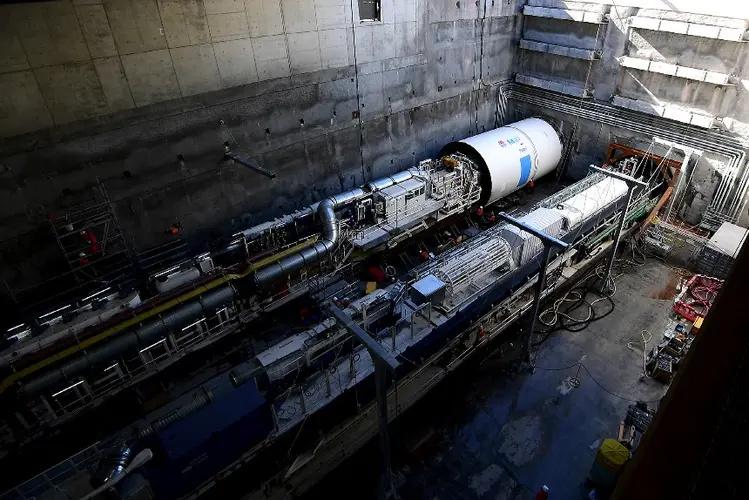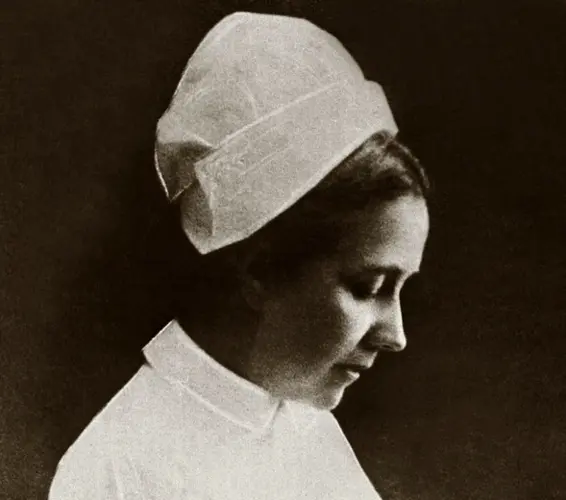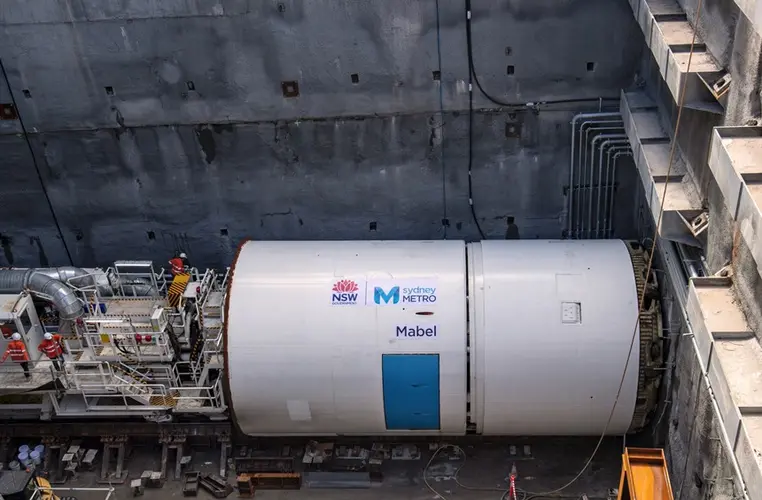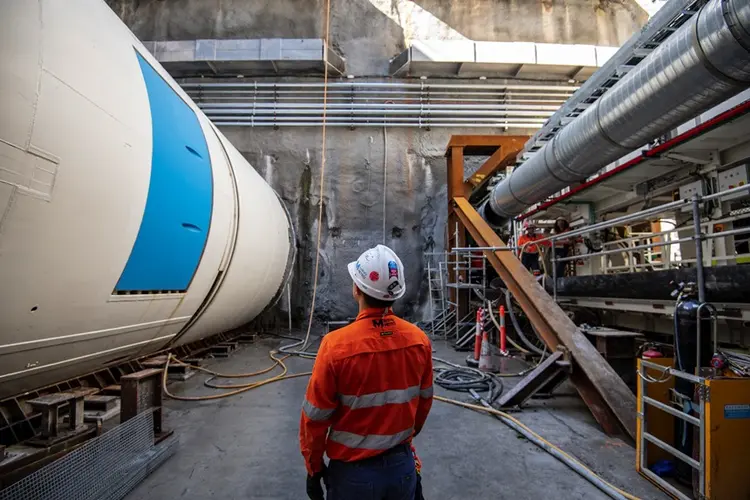Fourth mega borer starts work on metro tunnels
11.02.2019




The fourth of five mega tunnel boring machines (TBMs) has started tunnelling under Sydney.
TBM Mabel has been launched at Chatswood to help deliver 31km of tunnels between Marrickville and Chatswood on Sydney Metro, extending Australia's biggest public transport project into the Sydney CBD.
TBM Mabel, together with TBM Wendy, which launched in January 2019, will each build 6.2 kilometre tunnels to the edge of Sydney Harbour.
The two TBMs will tunnel towards the new Sydney Metro stations being constructed at Crows Nest and North Sydney before being retrieved at a temporary construction site at Blues Point.
TBMs Nancy and Mum Shirl, which started work late last year from Marrickville, are excavating 8.1 kilometre tunnels which will pass underneath the CBD and on to Barangaroo.
A fifth machine has been specially designed to deliver the twin tunnels under Sydney Harbour.
Mabel is one of five TBMs that will excavate 5.9 million tonnes of rock – enough to fill about 940 Olympic swimming pools.
TBMs Nancy, Mum Shirl and Wendy have already built more than 2.5 kilometres of tunnels between them – that’s more than 10 percent of the Sydney Metro tunnelling task completed.
The TBMs are about 150 metres long – or longer than two Airbus A380s – and specially designed for Sydney’s geology to cut through our hard sandstone.
The latest TBM is named after Mabel Newill, who was a matron at Royal Prince Alfred Hospital (RPAH) and an Australian war nurse in World War I.
Ms Newill made a significant contribution to medicine in Sydney by introducing sanitation techniques to help stop the spread of typhoid at RPAH in the early 1900s.
On major tunnelling projects around the world, underground workers look to Saint Barbara for protection and, as such, machines that work underground are traditionally given female names.